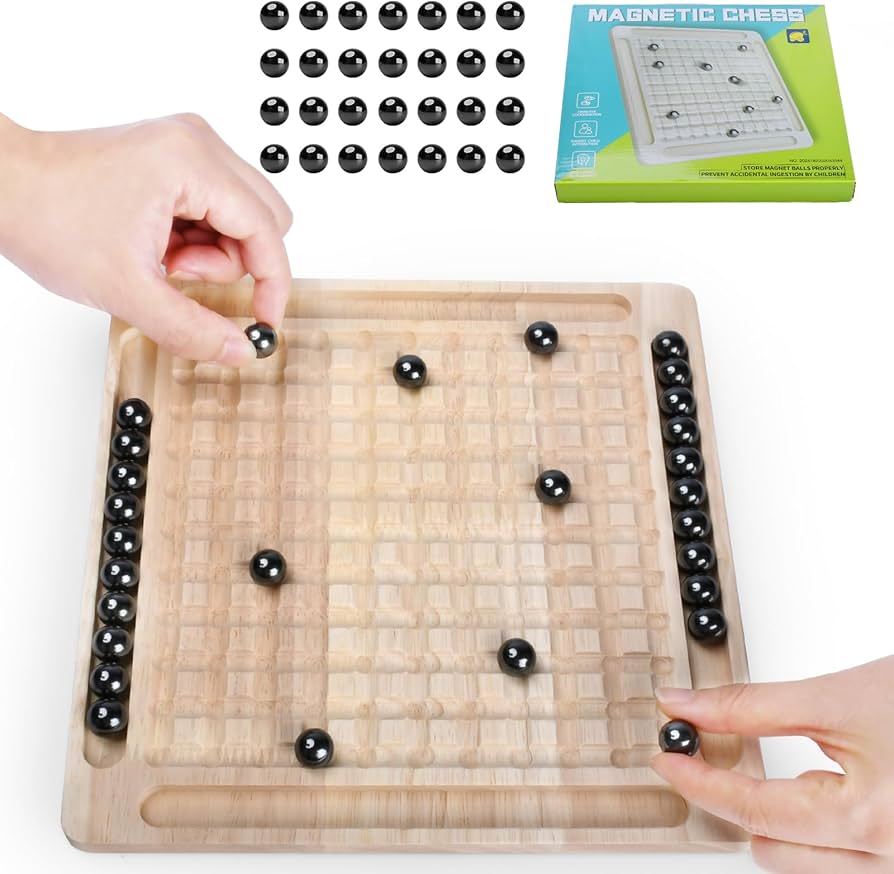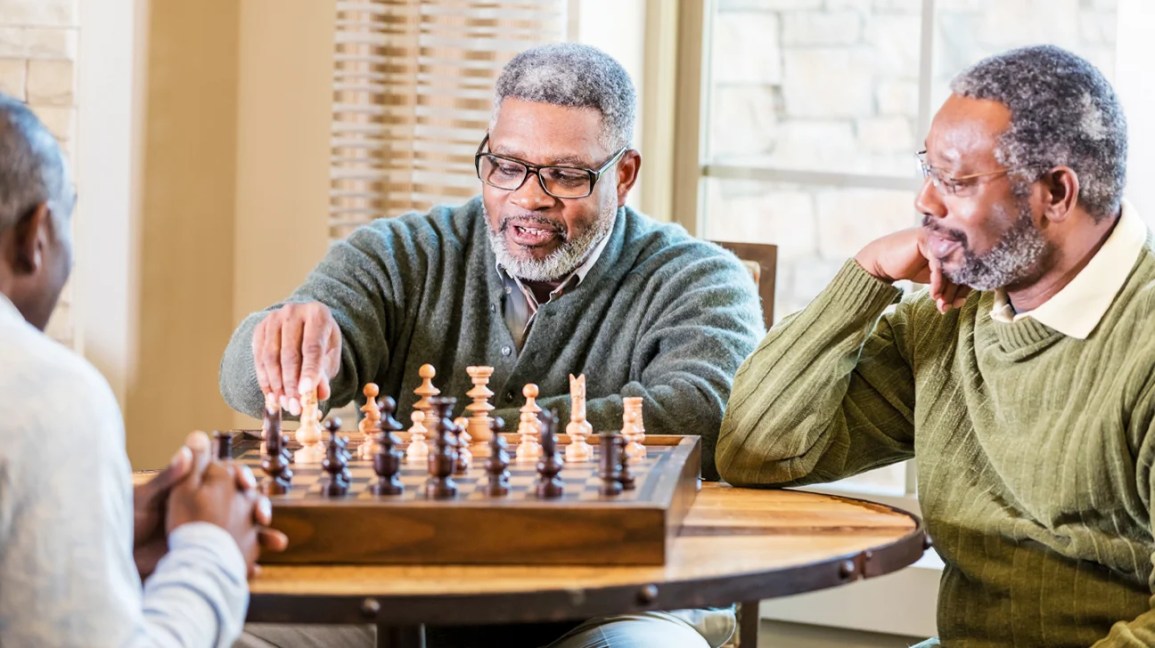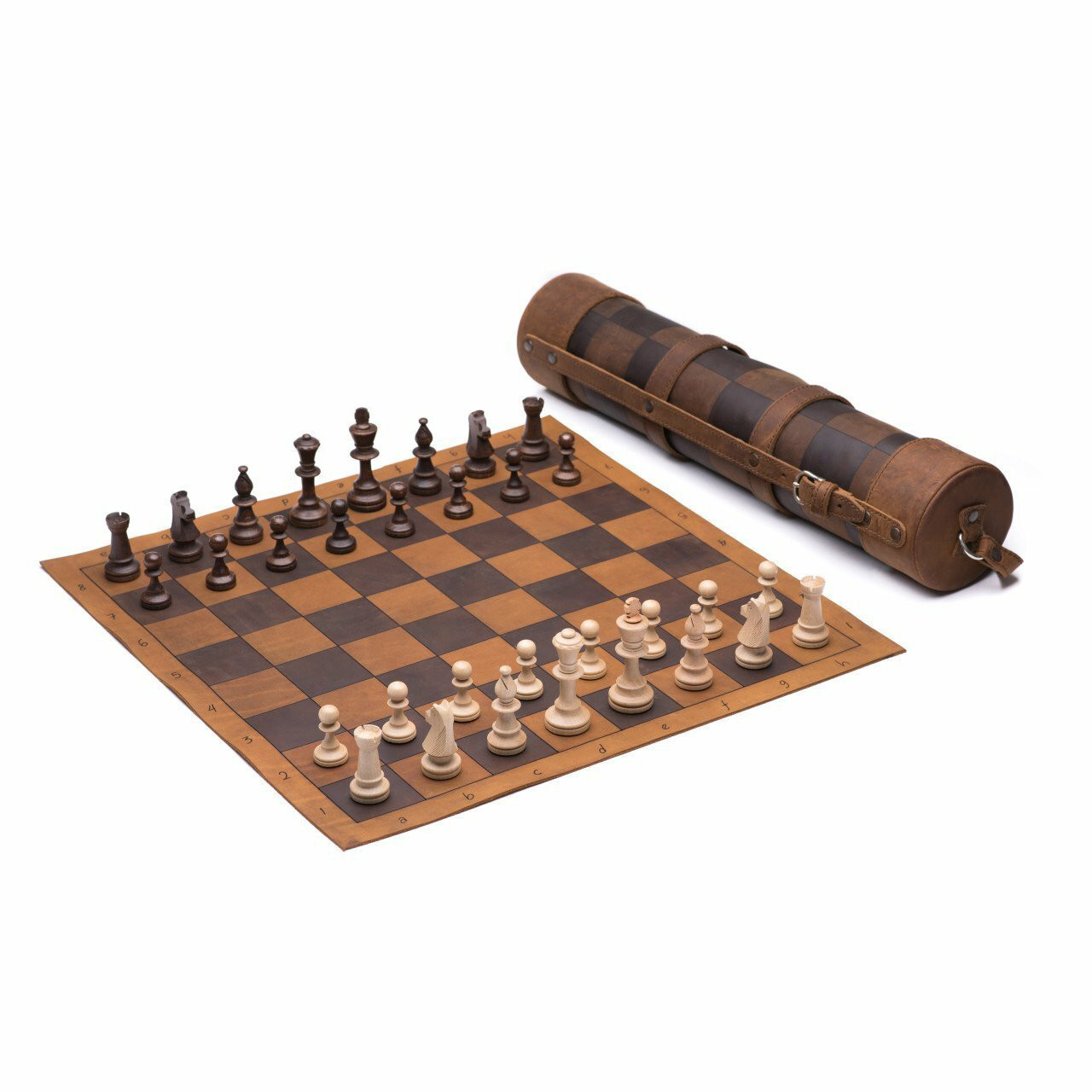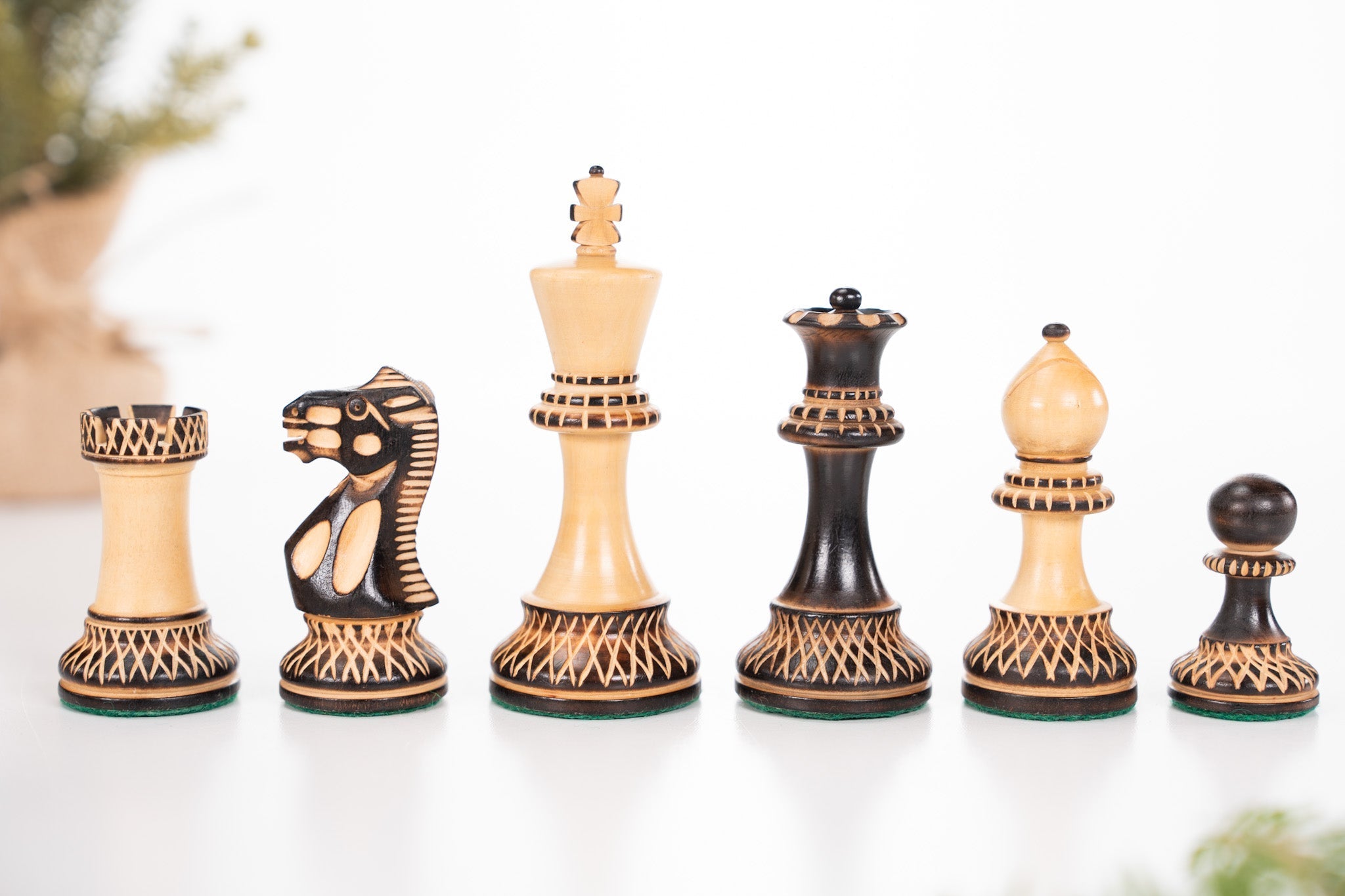Chess pieces have unique designs for a reason. Each piece’s shape and appearance have historical and practical significance.
Chess is a game of strategy and intellect. The design of the pieces is not just for aesthetics. Each piece’s look reflects its role and power on the board. The king’s crown, the queen’s elegant shape, and the knight’s horse head all tell a story.
These designs help players quickly recognize each piece and its function. Understanding why chess pieces look the way they do adds depth to the game. It connects the modern player to the ancient origins of chess. We explore the fascinating history and reasons behind the designs of these iconic pieces.
Origins Of Chess Pieces
The origins of chess pieces are deeply rooted in history. Each piece has a unique design that reflects its role and cultural significance. Understanding these origins offers insight into how the game of chess has evolved over centuries.
Ancient Beginnings
Chess originated in India around the 6th century. The game was called “Chaturanga,” meaning “four divisions of the military.” The pieces represented infantry, cavalry, elephants, and chariots. These early pieces were simple in design. They were functional and easy to recognize.
As the game spread to Persia, it became known as “Shatranj.” Persian players adapted the pieces to fit their own culture. For example, the elephant became a bishop. The chariot turned into a rook. This transformation marked the beginning of the chess pieces we know today.
Evolution Of Design
The design of chess pieces continued to evolve as the game spread to Europe. By the 15th century, European chess pieces had taken on more familiar shapes. The king and queen became regal figures. Knights were modeled after horses. Bishops resembled clergymen, reflecting the church’s influence during that time.
The Staunton design, introduced in 1849, standardized the look of chess pieces. Named after Howard Staunton, a famous chess player, this design focused on simplicity and elegance. It made the pieces easy to recognize and handle. This design is still the most popular today.
Each chess piece has a rich history. From ancient India to modern Europe, their design has evolved to reflect cultural and practical influences. Understanding these origins adds depth to the game and enhances the experience for players.
Credit: www.reddit.com
Influence Of Culture
Chess pieces have a unique design that tells a story. Their shapes and symbols reflect the culture they originated from. This rich history shapes the game we know today. Understanding this influence can deepen your appreciation for chess. Let’s explore how culture has influenced the design of chess pieces.
Persian Influence
Persia played a key role in shaping chess pieces. The game spread from India to Persia. Persian designs added elegance and refinement. The pieces began to symbolize military ranks. The rooks represented chariots, knights looked like horsemen, and bishops symbolized advisors. This military connection made the game more strategic. Persian culture valued wisdom and strategy. These values are mirrored in the chess pieces’ design.
Indian Roots
Chess originated in India around the 6th century. The original pieces had simple forms. They represented the four divisions of the Indian military. These were infantry, cavalry, elephants, and chariots. The game was called “Chaturanga,” which means “four divisions.” The king and his advisor were the most important pieces. This early version set the foundation for modern chess. Indian influence remains evident in the basic structure of the game.
Medieval Transformations
Chess has evolved over centuries. The medieval period marked significant changes in the design of chess pieces. The pieces transformed from simple forms to elaborate representations, reflecting the society of the time.
European Adaptations
During the medieval period, chess pieces in Europe began to change. The shapes and figures of the pieces were influenced by European culture and society. The king and queen pieces became more detailed, showing crowns and robes.
| Piece | Medieval Adaptation |
|---|---|
| King | Wore a crown and carried a scepter |
| Queen | Adorned with a crown and flowing robes |
| Knight | Depicted as a horse with a knight on top |
| Rook | Shaped like a castle or fortress |
| Bishop | Modeled after a church figure, often with a mitre |
Symbolism In The Middle Ages
Chess pieces from the medieval period were rich in symbolism. Each piece represented elements of medieval life and power structures.
- King: The most important piece. Represented the ruler of the land.
- Queen: Symbolized the powerful and influential women of the era.
- Knights: Embodied the military class, essential for defending the kingdom.
- Rooks: Represented the castles, key to the defense strategy.
- Bishops: Showed the church’s influence and power in medieval society.
These transformations in chess pieces made the game more relatable. They helped players connect with the pieces on a personal level.
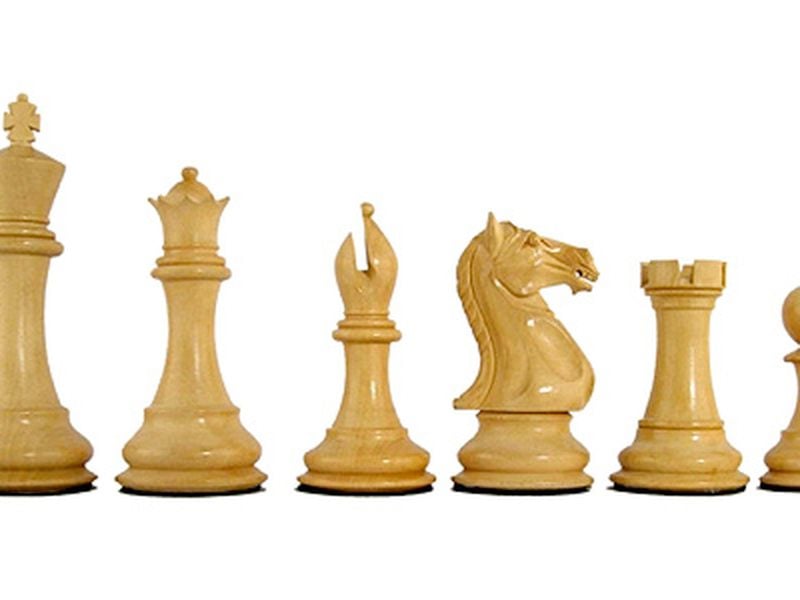
Credit: www.smithsonianmag.com
Standardization Of Design
Chess is a game of strategy, intellect, and tradition. The design of chess pieces has evolved over centuries. The standardization of design has played a crucial role. It has shaped how we recognize and play the game today.
Staunton Chess Set
The Staunton Chess Set is the most famous design. Created in 1849 by Nathaniel Cooke, it quickly became the standard. The set was named after Howard Staunton, a famous chess player. He endorsed the design, which helped its popularity. Each piece in the Staunton set has a unique design. This makes it easy to identify during play. The pieces are simple, yet elegant. They are also practical for play, with weighted bases for stability.
Impact On Modern Chess
The Staunton design changed chess forever. It made the game more accessible. Players from different regions could easily recognize the pieces. This design is now used in all official tournaments. It ensures that every player competes on equal terms. The design’s simplicity also makes it ideal for mass production. This means more people can afford quality chess sets. The standardization of design has united chess players around the world. It has preserved the game’s rich history and tradition.
Iconic Piece Designs
Chess pieces are not just functional; they are also rich in history and art. Their iconic designs tell a story of tradition, culture, and strategy. Let’s delve into the unique designs of these pieces to understand their significance better.
King And Queen
The King is the tallest piece, symbolizing its importance in the game. Its crown is often ornate, signifying its royal status. The Queen is the most powerful piece. It is only slightly shorter than the King. The crown of the Queen is distinct, usually with a small ball at the top, representing its versatility and strength.
Bishop And Knight
The Bishop has a unique slanted top, resembling a bishop’s mitre. This design signifies its diagonal movements. The Knight stands out with its horse head design, symbolizing agility and the ability to jump over other pieces.
| Piece | Design Feature | Symbolism |
|---|---|---|
| King | Tallest piece, ornate crown | Royalty, importance |
| Queen | Ornate crown with ball | Power, versatility |
| Bishop | Slanted top | Diagonal movement |
| Knight | Horse head | Agility, jumping ability |
Each piece’s design is not random. It carries deep meaning and reflects its role in the game. Understanding these designs can enhance your appreciation of chess.
:max_bytes(150000):strip_icc()/illustrated-guide-to-chess-pieces-611547_v3-777101f35fb74a6c89c5daa058954683.png)
Credit: www.thesprucecrafts.com
Material And Craftsmanship
Chess pieces have a distinctive look, thanks to their material and craftsmanship. The choice of materials and the skill of artisans play a key role. This impacts the feel and appearance of the pieces.
Wood And Ivory
Traditionally, artisans used wood and ivory to craft chess pieces. Wood was popular due to its availability and workability. Craftsmen could carve intricate details into wooden pieces. Different types of wood offered unique textures and colors. Hardwoods like boxwood and ebony were preferred for their durability.
Ivory was another prized material. It was valued for its smoothness and elegance. Ivory chess pieces often had fine details and a luxurious feel. Though beautiful, ivory use has declined due to ethical concerns.
Contemporary Materials
Today, modern materials have become popular in chess piece crafting. Plastic is common due to its affordability and durability. Plastic pieces are often used in casual and tournament play. They are lightweight and less prone to damage.
Metal is another contemporary choice. Metal chess pieces offer a solid, heavy feel. They are usually crafted from brass, aluminum, or stainless steel. Metal pieces are durable and can have a sleek, modern look. The choice of material impacts not just the aesthetics, but also the playing experience.
Cultural Variations
The design of chess pieces varies across cultures, reflecting local traditions and aesthetics. These cultural variations enrich the game, adding layers of history and meaning. Different regions have unique interpretations of the classic chess set, resulting in diverse and fascinating designs.
Asian Chess Variants
Asian chess variants, like Xiangqi and Shogi, have distinct pieces. In Xiangqi, or Chinese chess, pieces are flat and circular. They feature Chinese characters that indicate their roles. Shogi, or Japanese chess, uses rectangular pieces marked with Kanji symbols. Both games have intricate rules and strategies, showing deep cultural roots.
Regional Differences
Chess sets from various regions exhibit unique styles. In India, the birthplace of chess, pieces often have ornate designs. Persian chess pieces are slender and elegant, reflecting Persian art. European chess sets, like the Staunton design, are more uniform. They emphasize practicality and simplicity, making them popular worldwide.
Future Of Chess Piece Design
The design of chess pieces has evolved over centuries, reflecting cultural and artistic trends. As technology advances, the future of chess piece design looks exciting and innovative. Modern materials and digital enhancements offer new possibilities, ensuring the game remains fresh and engaging for all players.
Modern Innovations
Modern innovations in chess piece design focus on functionality and aesthetics. Designers use advanced materials like carbon fiber and lightweight metals. These materials make the pieces durable and easy to handle. They also allow for intricate detailing, enhancing visual appeal.
- 3D Printing: 3D printing allows for custom designs. Players can create unique sets that reflect their personal style.
- Magnetic Pieces: Magnetic pieces ensure stability during travel or play on uneven surfaces.
- Ergonomic Designs: Ergonomic designs improve comfort, especially for long games. Pieces are easier to grip and move.
Digital Chess Sets
Digital chess sets offer a blend of traditional gameplay and modern technology. These sets connect to digital platforms, providing new ways to play and learn.
- Smart Boards: Smart boards track moves automatically. They connect to apps for analysis and online play.
- LED Indicators: LED indicators on digital pieces show possible moves. This helps beginners learn and improves gameplay strategy.
- Augmented Reality: Augmented reality (AR) brings pieces to life. Players see virtual pieces move on physical boards.
Digital chess sets also include features like built-in timers and voice commands. These features enhance the playing experience, making it more interactive and enjoyable.
| Feature | Benefit |
|---|---|
| 3D Printing | Customizable and detailed designs |
| Magnetic Pieces | Stability during play |
| Smart Boards | Automatic move tracking |
| LED Indicators | Shows possible moves |
The future of chess piece design promises to blend tradition with technology. This ensures the game remains engaging for future generations.
Conclusion
Chess pieces have unique designs for good reasons. Each shape has history. The knight’s horse shape, the rook’s tower, and the bishop’s mitre tell stories. These designs make chess visually appealing. They also help players recognize pieces quickly. The look of each piece adds to the game’s charm.
Understanding these shapes enriches your chess experience. Next time you play, notice the details. They are part of the game’s magic. Enjoy the beauty and history in every move.

